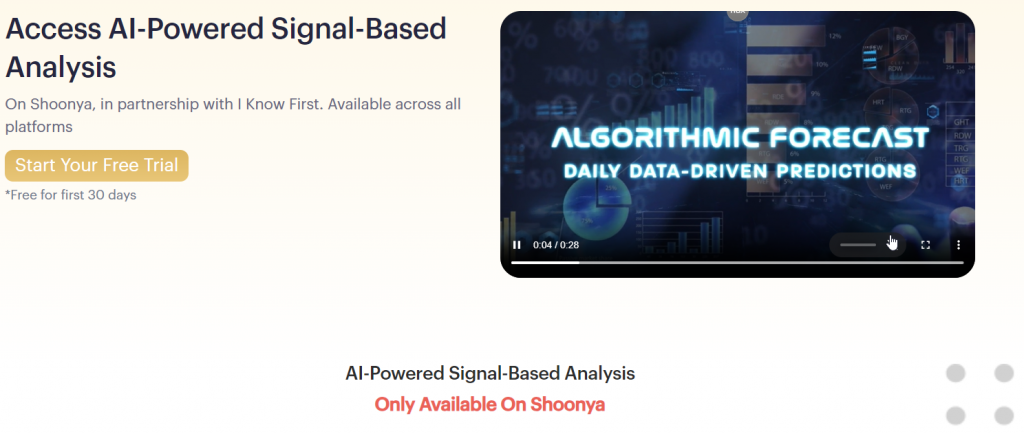20 Good Tips For Deciding On AI Stock Analysing Sites
20 Good Tips For Deciding On AI Stock Analysing Sites
Blog Article
Top 10 Tips To Evaluate The Ai And Machine Learning Models Of Ai Stock Predicting/Analyzing Trading Platforms
To get precise valuable, reliable and accurate insights it is essential to check the AI models and machine learning (ML). Models that are not properly designed or overhyped can lead financial losses and incorrect forecasts. Here are ten of the most useful ways to evaluate the AI/ML models of these platforms.
1. Learn about the purpose of the model and its approach
Determining the objective is important. Determine whether the model was designed for long-term investing or trading in the short-term.
Algorithm transparency: Make sure that the platform discloses the types of algorithms employed (e.g., regression and decision trees, neural networks and reinforcement learning).
Customizability. Assess whether the model's parameters can be customized to suit your personal trading strategy.
2. Evaluate Model Performance Metrics
Accuracy Verify the model's predictive accuracy. Don't rely only on this measure however, because it can be misleading.
Recall and precision: Determine whether the model is able to identify real positives (e.g., correctly predicted price changes) and reduces false positives.
Risk-adjusted Returns: Check the model's predictions if they produce profitable trades taking risk into consideration (e.g. Sharpe or Sortino ratio).
3. Check the model's performance by backtesting it
Historical performance: Backtest the model with historical data to see how it performed in past market conditions.
Test the model on information that it hasn't been trained on. This will help avoid overfitting.
Scenario analysis: Assess the model's performance under different market conditions.
4. Be sure to check for any overfitting
Overfitting: Be aware of models that work well with training data, but do not perform well with unseen data.
Regularization techniques: Determine the application uses methods like regularization of L1/L2 or dropout to avoid overfitting.
Cross-validation. The platform must perform cross validation to test the model's generalizability.
5. Evaluation Feature Engineering
Relevant features: Find out whether the model is using relevant features (e.g. volume, price emotional indicators, sentiment data, macroeconomic factors).
Feature selection: You should ensure that the platform is selecting features with statistical importance and avoid unnecessary or redundant data.
Dynamic features updates: Check whether the model adapts over time to new features or changing market conditions.
6. Evaluate Model Explainability
Interpretability: Make sure the model gives clear explanations of its assumptions (e.g. SHAP values, the importance of features).
Black-box Models: Be cautious when you see platforms that use complicated models with no explanation tools (e.g. Deep Neural Networks).
User-friendly insights : Determine if the platform is able to provide actionable information in a form that traders can easily be able to comprehend.
7. Reviewing the model Adaptability
Market fluctuations: See whether your model is able to adapt to market fluctuations (e.g. new regulations, economic shifts or black-swan events).
Continuous learning: Verify that the platform updates the model with fresh data to boost performance.
Feedback loops. Make sure that the model incorporates the feedback from users as well as real-world scenarios in order to improve.
8. Check for Bias and Fairness
Data bias: Ensure that the training data you use is accurate to the market and without biases.
Model bias: Find out if you are able to actively detect and reduce biases that exist in the forecasts of the model.
Fairness. Make sure your model doesn't unfairly favor specific industries, stocks or trading strategies.
9. Evaluation of Computational Efficiency
Speed: Check whether a model is able to make predictions in real time with the least latency.
Scalability: Find out if a platform can handle many users and huge datasets without performance degradation.
Resource usage: Check to determine if your model is optimized to use efficient computing resources (e.g. GPU/TPU utilization).
10. Transparency and accountability
Model documentation: Ensure the platform provides detailed documentation about the model's architecture, training process, and the limitations.
Third-party auditors: Examine to see if the model has been subject to an independent audit or validation by an independent third party.
Check that the platform is outfitted with mechanisms to detect the presence of model errors or failures.
Bonus Tips
User reviews: Conduct user research and research cases studies to evaluate the model's performance in the real world.
Trial period: Try the model for free to test how accurate it is as well as how simple it is utilize.
Support for customers: Make sure that the platform provides solid customer support that can help resolve any technical or product-related problems.
By following these tips you can examine the AI/ML models on platforms for stock prediction and make sure that they are accurate, transparent, and aligned to your trading objectives. Take a look at the top rated https://www.inciteai.com/trader for site info including best ai copyright trading bot, investing ai, best ai copyright to buy, trader ai intal, ai stock prediction, chart analysis ai, invest in ai stocks, ai stock trader, investing in ai stocks, ai investing tools and more.
Top 10 Tips For Evaluating The Regulatory Conformity Of Ai Stock Prediction/Analyzing Trading Platforms
The compliance with regulatory requirements of trading platforms using AI to analyze or predict price movements is a crucial aspect. Compliance helps to ensure that the platform operates in compliance with legal guidelines and protecting the privacy of users. These are the top ten tips to evaluate the compliance with regulations of these platforms:
1. Verify registration and licensing
Regulatory bodies: Ensure the platform is registered with and regulated by the appropriate financial regulatory bodies (e.g., SEC in the U.S., FCA in the UK, ASIC in Australia).
Verify the broker relationship If your platform has a partnership with brokers or brokers, be sure these brokers are also licensed and regulated.
Public records: Visit the official website of the regulator to see the status of registration as well as past violations.
2. Look for data privacy Compliance
GDPR: If you operate or serving users within the EU, ensure your platform is compliant with the General Data Protection Regulation (GDPR).
CCPA: California Consumer Privacy Act compliance is mandatory for all users.
Policy on handling data: Make sure you read the privacy policies to know the way in which user data is collected and stored.
3. Review the Anti-Money Laundering(AML) measures
AML policies: Make sure the platform is equipped with strong AML policies that are in place to detect and prevent the laundering of money.
KYC Procedures: Check if there are procedures on the platform to verify the identity of users.
Monitoring transactions: Ensure that the platform monitors transactions in order to identify suspicious activity and notify authorities.
4. Make sure you're in compliance with Trading Regulations
Market manipulation: Ensure that the platform is equipped to avoid market manipulation like fake trading, wash trading.
Types of orders. Verify whether your platform meets the regulations for orders.
The best execution: Ensure that the platform is using top execution methods to make trades at the lowest price.
5. Assess Cybersecurity Compliance
Data encryption. Ensure your platform uses encryption of user data both in transit and at the rest.
Incident response - Verify the platform's plan to take action in the event of cyberattacks or data breaches.
Make sure to check for any certifications.
6. Transparency and disclosure: A Study
Disclosure of fees: Ensure that the website discloses all fees including hidden or additional fees.
Risk disclosure: Check if the platform has clear risk disclosures, especially for leveraged or high-risk trading strategies.
Performance reporting - Examine to see if there are accurate and transparent performance reports that are provided by the platform for its AI models.
7. Verify the compliance to International Regulations
Cross-border trading. If you are planning to conduct international trade, make sure that your platform adheres to the regulations in force.
Tax reporting: Check whether a platform offers tools or reports that allow users to adhere to tax laws.
Sanctions compliance - Make sure that the platform is compliant to international sanctions and does not allow trading only to the countries or entities that are banned.
8. Examine Record-Keeping and Audit Trails
Transaction records: Ensure the platform has detailed records of all transactions to ensure audit and regulatory compliance.
User activity logs (logs) The logs contain information about user activity. check if the platform records user activity such as transactions and logins. Also, verify if account settings are altered.
Audit readiness: Verify that the platform is able to supply all the necessary documentation and logs in case of the need for a regulatory audit arises.
9. Verify compliance with AI Specific Regulations
Algorithmic trading rules: If a platform allows algorithmic trading, be sure that it's in compliance with regulations such as MiFID II in Europe or Reg SCI in the U.S.
Fairness and Bias: Examine for any biases that the AI platform is able to detect and reduce within the AI model. This will ensure fair and ethical trade.
Explainability: Certain laws require that platforms give explanations for AI-driven predictions or decisions.
10. Review user feedback and the history of regulatory compliance
Reviewer feedback: Go through user feedback and then compare it with the platform's conformance to regulatory standards.
Examine the regulatory history to see if there are any fines or penalties for infractions of regulations.
Third-party audits: Determine if the platform undergoes regular audits by a third party to ensure compliance with regulations.
Bonus Tips:
Legal consultation: Speak with a lawyer to ensure that the platform meets the relevant laws.
Free trial period: You are able to use a demo or free trial to try out the features that ensure compliance of the platform as well as its documentation.
Support for customers: Make sure the platform provides assistance for compliance-related questions or concerns.
Following these tips can help you evaluate the regulatory compliance of an AI trading platforms that predict and analyze stocks. You will be able pick a system that is in compliance with the legal frameworks and safeguards your rights. Compliance not only reduces the risk of legal violations, but it also helps build trust and confidence in the platform's services. View the best best ai stock info for blog recommendations including ai stocks to invest in, best ai trading platform, best ai copyright to buy, best stock analysis website, investing ai, investment ai, ai investing tools, chart ai for trading, ai stock, ai investing and more.